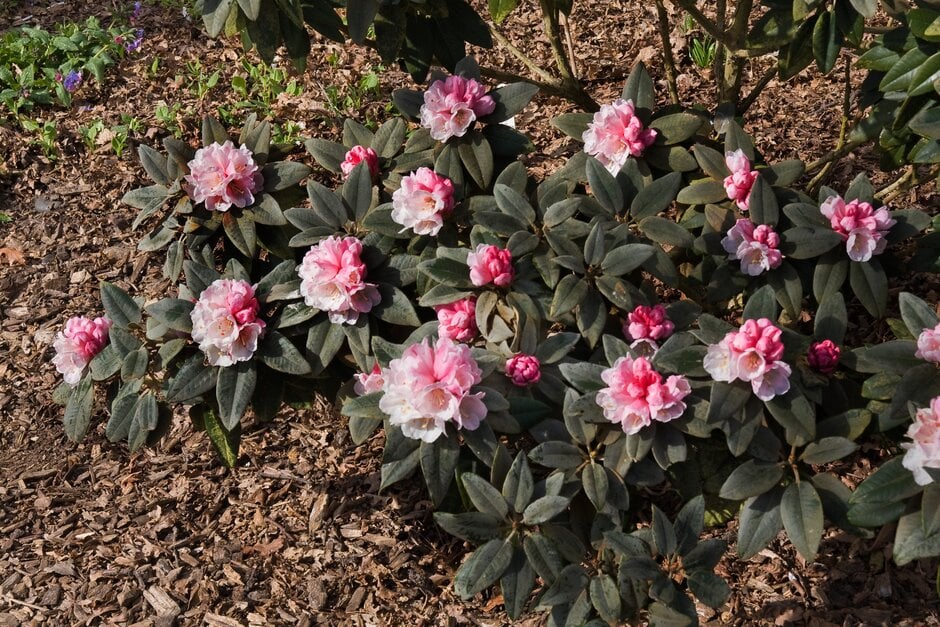Rhododendron pachysanthum 'Crosswater'
rhododendron 'Crosswater'
A mound-forming, evergreen shrub, ultimately reaching about 2m in height and spread. Young shoots emerge covered in silvery-buff felt, which remains as a thin, grey coating on the upper leaf surfaces and darkens to tan on the undersides. Small clusters of pink buds open to pale pink then white, funnel-shaped flowers, in mid- to late spring
Size
Ultimate height
1.5–2.5 metresTime to ultimate height
10–20 yearsUltimate spread
1.5–2.5 metresGrowing conditions
Moisture
Moist but well–drainedpH
AcidColour & scent
| Stem | Flower | Foliage | Fruit | |
| Spring | Pink White | Green Grey Silver | ||
|---|---|---|---|---|
| Summer | Green Brown Grey | |||
| Autumn | Green Grey Silver | |||
| Winter | Green Grey Silver |
Position
- Full shade
- Partial shade
Aspect
South–facing or East–facing or West–facing
Exposure
Sheltered Hardiness
H6Botanical details
- Family
- Ericaceae
- Native to GB / Ireland
- No
- Foliage
- Evergreen
- Habit
- Bushy
- Potentially harmful
- Harmful if eaten. Wear gloves and other protective equipment when handling. Pets (dogs, cats, rabbits, tortoises) Harmful if eaten - for further information and contact numbers regarding pets, see the HTA guide to potentially harmful plants
- Genus
Rhododendron can be evergreen or deciduous shrubs or trees, with simple leaves, sometimes with a dense colourful indumentum of hairs on the lower side, and funnel-shaped, bell-shaped or tubular flowers that may be solitary or in short racemes
- Name status
Accepted
How to grow
Cultivation
Grow in moist but well-drained, leafy, humus-rich, acid soil with shelter from strong winds. Will tolerate full sun but best in semi-shade; see rhododendron cultivation
Propagation
Propagate by semi-ripe cuttings in late summer, layering in autumn or grafting in late summer or late winter
Suggested planting locations and garden types
- City and courtyard gardens
- Cottage and informal garden
- Flower borders and beds
Pruning
Pests
May be susceptible to vine weevil, rhododendron leafhopper, pieris lacebug, scale insects, caterpillars and aphids
Diseases
May be susceptible to various rhododendron diseases including powdery mildews, rhododendron petal blight, rhododendron bud blast, silver leaf and honey fungus
Get involved
The RHS is the UK’s gardening charity, helping people and plants to grow - nurturing a healthier, happier world, one person and one plant at a time.
